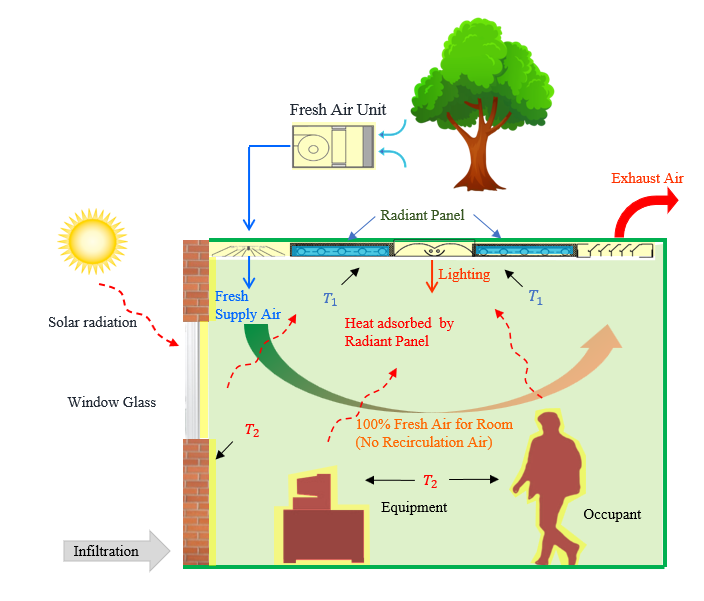Radiant cooling system has been adopted in European countries for more than 30 years. The principle of radiant cooling system is circulating a chilled fluid through pipework or coils located in the radiant panel. The pipework or coils in the ceiling then absorb the thermal energy radiating from people and other sensible load, lowering the mean radiant temperature of the room.
The major difference between radiant panel and traditional air conditioning is the heat transport mechanism. Traditional convection air conditioning uses air distribution through duct work, while radiant cooling uses a combination of radiation and convection.
Radiant Cooling Energy
= εAθσ(T_2^4-T_1^4)
ε – emissivity (unitless)
A - Area of objects in m^2
θ - Solid angle between
radiant objects in radian
σ - Stefan-Boltzmann constant
= 5.670 x 10^(-8) W m^(-2) K^(-4)
T_1- Surface temperature
at radiant panel in K
T_2- Surface temperature
at heat source in K

